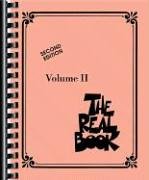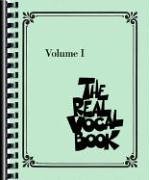The Real Book is now the most popular and widely Jazz Fake Book. But what is the Real Book, as it was created and who created the work, working with the now millions of jazz musicians. The story of a bible of jazz.

The Real Book is a collection of the most important jazz standards and jazz compositions from the past 60 years, the transcribed with the melody and chord symbols (Changes) the subject of a piece mentioned, is to be improvised on the solo. This type of sheet music quite common in jazz and there and call themselves "lead sheet". The Real Book thus comprises a collection of jazz pieces that are most frequently played at concerts and jam sessions.
result, the real book sometime in the seventies on Beerkle College of Music, one of the most prestigious universities of music in the U.S., which has spawned a number of famous musicians (such as the pianist and jazz singer Diana Krall). This should have the bassist Steve Swallow and pianist Paul Bley, the glorious idea to create a book that contains the most important jazz standards and thus make the musician's life easier. With the help of many other students, they started such a huge Sammlung an transkribierter Jazz-Kompositionen zu erstellen, die nach und nach wuchs und am Ende drei volle Bücher umfasste, Vol. 1, Vol. 2 und Vol. 3. Die ersten beiden Bücher waren noch zunächst größtenteils per Hand geschrieben, das dritte per Computer. So umfasste dieses aller erste Real Book am Anfang noch viele Kompositionen von Swallow und Bley selbst, aber auch schon viele allgemein bekannte Jazz-Kompositionen.
Sehr schnell verbreitete sich dieses neu entstandenen Real Book in der Jazz-Szene und wurden fortan zu einer wichtigen Grundlage vieler Sessions. Dadurch, dass sie auch noch schwer aufzutreiben waren, waren sie daher umso beliebter bei Musikern und die Idee von so genannten Fake Books verbreitete sich rasend schnell. So appeared increasingly more Fake Books on - for example, the Latin Real Book ", the" All-Jazz Real Book "or the" Real Jazz Standards Fake Book "and many more - which is not only in quality but also in the implementation of the first "real" Real Books distinction. But even this was missing an important basis Real Books. When the collection was the copyrights of those jazz standards, and so was completely neglected in the end more and more a wonderful work of jazz pieces, but all had no license and therefore were illegal simply. But even that could stop the success of the Real Books are no longer widely used and so the books within a few years an immense number

The term "Real Book" since its existence is not quite clear, and as with the Real Book and the name Fake Book, a term that is largely in has the language of jazz naturalized, but is not specific for the Jazz, but also in blues, country and even pop is used. This term can be derived from the English word "to fake" deduce what "fake" as much as means. He comes from a time when musicians played more often in jazz clubs and bars and a tip for the music score wishes fulfilled. With a Fakebook So you could almost pretend to know a jazz song, and his audition, as if they had rehearsed it. All this, of course, but based on improvisation and years of hard work for a musician to master this.

And that is also already reached the main point of playing to mastering this art, after the Real Book , is necessary: \u200b\u200bThe ability out of the situation to improvise no matter what musicians or with which band, and "Yamen" too. It is the art of a true professional musician from an separate, it operates only as a hobby and does not invest the time in this work. to play musicians who have mastered it, all songs from the Real Book - and usually by heart! - Include specifically in the category of jazz to the best and most highly worthy musicians.
is the other point that the Real Book is a unique music collection, which is ubiquitous at every jam session, but is sometimes misinterpreted. Undoubtedly, the Real Book is the best way to jazz to enter and go with a professional attitude to work, but a real book should be on the path of their musical existence more than a reference work sein, d.h. häufig gespielte Standards sollten am besten auswendig gelernt werden, da ein zu häufiges Nachschlagen des gleiche Songs auf die Dauer nicht sehr gut zum Publikum rüberkommt und die Besonderheit jener Stücke damit verloren gehen.
 Zum anderen ist in dieser Hinsicht auch zu bedenken, dass früher keine Real Book artige Notensammlung existierte und Musiker sich diese Jazz-Standards selber und durch ihr gutes Gehör aneigneten. Was heute an Hochschulen für Musiker unterrichtet und gelehrt wird, wurde sich früher selber angeeignet durch das blanke Hören der Radiosender oder Konzerte bzw. Broadwayshows, aus denen die Most of the jazz standards by composers such as Irving Berlin, Jerome Kern and Otto Harbach, Cole Porter or Richard Rodgers and Lorenz Hart are from the early thirties and forties. Today there are musicians who have mastered 1000 to 1500 jazz standard by heart, and in most music scene is a basic vocabulary of about 400 jazz standards prerequisite to may even play with other musicians (likely as such a tough patch is probably New York call). To have achieved this, it is undoubtedly years of experience in the music to life and endless jam sessions and other opportunities, such knowledge ultimately implement them. Of course, but are similar in many standards their shape, the structure or the cadences. An example is the ever constant Blue regimens common II-VI cadences or the key and melody.
Zum anderen ist in dieser Hinsicht auch zu bedenken, dass früher keine Real Book artige Notensammlung existierte und Musiker sich diese Jazz-Standards selber und durch ihr gutes Gehör aneigneten. Was heute an Hochschulen für Musiker unterrichtet und gelehrt wird, wurde sich früher selber angeeignet durch das blanke Hören der Radiosender oder Konzerte bzw. Broadwayshows, aus denen die Most of the jazz standards by composers such as Irving Berlin, Jerome Kern and Otto Harbach, Cole Porter or Richard Rodgers and Lorenz Hart are from the early thirties and forties. Today there are musicians who have mastered 1000 to 1500 jazz standard by heart, and in most music scene is a basic vocabulary of about 400 jazz standards prerequisite to may even play with other musicians (likely as such a tough patch is probably New York call). To have achieved this, it is undoubtedly years of experience in the music to life and endless jam sessions and other opportunities, such knowledge ultimately implement them. Of course, but are similar in many standards their shape, the structure or the cadences. An example is the ever constant Blue regimens common II-VI cadences or the key and melody. important when using the Real Books is not only to advance elaborate as an individual and personal musician, but to pay attention to other things. This applies above all to listen to other musicians in the band active and melodic or rhythmic motives of the musicians as quickly as possible to understand and assimilate in order to develop a feel for the shape of each piece, so you must not count the beats for example. About everything is still the improvisation that is without question the most difficult to master.
Since the seventies a number of such collections of jazz standards has emerged in terms of their quality, faithfulness and differ considerably, especially in view of their copyright status, for the most part.
special way the first versions of the Real Books often significant errors. Although there are of course no music collection that can be described as a 100% error-free, but here we clearly differentiate. In the first versions of the Real Books to 5th Edition had an above-average number of errors crept in, as it also written from scratch by hand were.
 Most errors are found to be less in the melody, but mostly in the chords and changes. It is in this situation, of course, very difficult to know which are the "right", or rather the 'normal' chords and which chords simply "wrong", or do not fit into the musical form of a piece. The only problem seems to be more of that, especially young musicians initially played the pieces as they are in the Real Books, without complying with older recordings on which the right chords were used. Sun creep in gradually, small Faults, can have a bad fall later to load.
Most errors are found to be less in the melody, but mostly in the chords and changes. It is in this situation, of course, very difficult to know which are the "right", or rather the 'normal' chords and which chords simply "wrong", or do not fit into the musical form of a piece. The only problem seems to be more of that, especially young musicians initially played the pieces as they are in the Real Books, without complying with older recordings on which the right chords were used. Sun creep in gradually, small Faults, can have a bad fall later to load. With the appearance of a newly revised Real Book, the 6th edition which has this year on the market and the first is really legal times, thus decreased the error rate in the Real Book and therefore the latest version of this book is really only recommended because it an ideal medium for getting into the jazz music is simply perfect.
The great advantage of the latest issue is that this time they appeared not illegal, so is the one no copycat Fakebook, for now, all other compositions have licenses, that the musicians are paid for their music. The only downside is that with this version include some items in their Key have been changed and therefore especially older fans of the Real Books, first with the new problems have to be and would rather rely on the older 5th Edition.

Either way, the Real Book has changed the Jazz in the previously more than 30 years of its existence from then on, it brought to both musicians and non musicians the possibility to give an insight and much to get more into the great world of jazz. The Real Book is now not only the most famous of all jazz books acquired, it is now also become the most valued, even if millions of illegal versions still in circulation , it has enriched the jazz and popular and it looks like the next 30 years with no loss in this success.
More information about the Real Books: Here
"Real Books" Now
0 comments:
Post a Comment